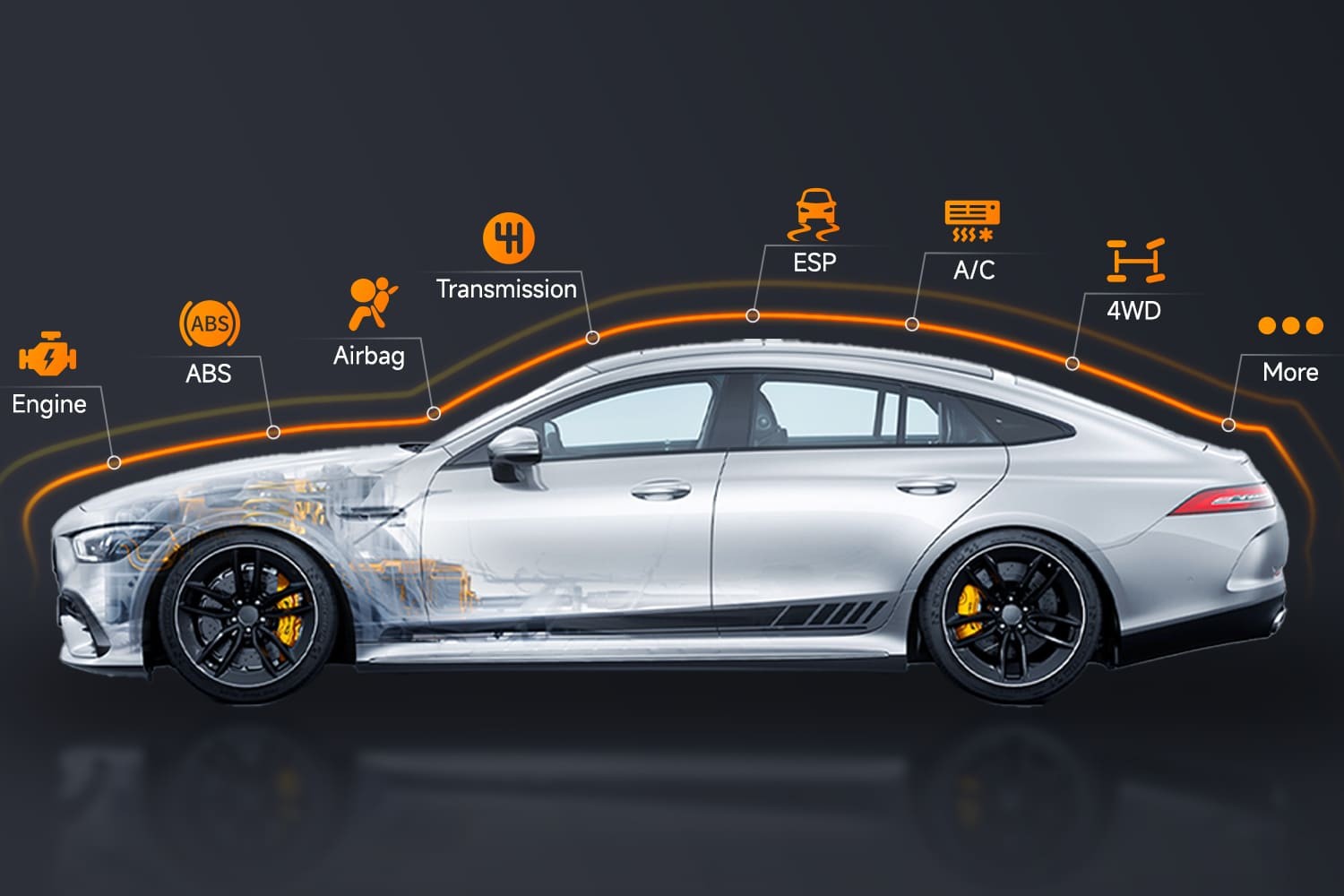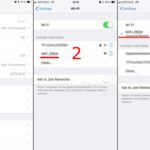Maintaining your vehicle’s health is paramount, much like looking after your own body. Regular checks and addressing minor concerns early can prevent major issues down the road. Fuel pump pressure is one such critical aspect that often goes unnoticed until problems arise. Many car owners wonder, “Can my OBD2 scanner actually read fuel pressure?” Let’s delve into the capabilities of OBD2 scanners and explore whether they can provide insights into this vital engine parameter.
Understanding the tools at your disposal is crucial for effective car diagnostics. Knowing what your OBD2 scanner can and cannot do is essential for accurate troubleshooting. When it comes to reading fuel pump pressure, it’s important to understand that most standard, entry-level OBD2 scanners are not equipped for this specific task. While these scanners excel at reading generic error codes and deciphering why your check engine light is illuminated, they typically lack the advanced features needed to monitor fuel pump pressure directly.
Fuel pump pressure is a key indicator of your car’s fuel delivery system’s health. Insufficient fuel pressure can starve your engine, leading to reduced performance or even engine stalling. Conversely, excessive fuel pressure can cause issues like rough idling and engine misfires. Think of fuel pump pressure as your car’s blood pressure; imbalances can signal underlying health problems. Monitoring fuel pressure proactively can help identify potential engine issues early, preventing more costly repairs in the future. Regular monitoring is a preventative measure that can save you significant expense and inconvenience.
Decoding OBD2 Scanner Capabilities and Limitations for Fuel Pressure Monitoring
OBD2 scanners are invaluable tools for modern car maintenance, offering a window into your vehicle’s onboard computer system. These devices empower car owners and mechanics to read and clear trouble codes, monitor a wide array of engine parameters, and perform essential emissions tests. They are like having a mini-diagnostic center at your fingertips, providing quick assessments of your vehicle’s condition.
However, while OBD2 scanners are powerful, they do have limitations, particularly when it comes to specialized data like fuel pump pressure readings. Standard OBD2 protocols are designed to provide a broad overview of vehicle health, primarily focusing on emissions-related systems and generic diagnostic information.
What OBD2 Scanners Do Well: Core Capabilities
Most OBD2 scanners are designed to efficiently handle a range of common diagnostic tasks:
- Reading and Clearing Diagnostic Trouble Codes (DTCs): OBD2 scanners are adept at retrieving DTCs, which are codes generated by the vehicle’s computer when it detects a problem. These codes can pinpoint issues ranging from faulty oxygen sensors to engine misfires, guiding you to the source of the check engine light. Clearing these codes after repairs is also a standard function, resetting the system and turning off the warning light.
- Real-time Data Monitoring: A significant capability of OBD2 scanners is their ability to display real-time data from various sensors throughout your vehicle. This live data stream includes crucial parameters such as engine RPM, coolant temperature, and fuel system status. Monitoring this data allows you to observe your engine’s performance in real-time, helping diagnose intermittent issues or understand how your vehicle behaves under different conditions.
- Emissions Readiness Checks: OBD2 scanners play a vital role in emissions testing. They can check the readiness status of various emissions-related systems, ensuring your car meets the required standards for state inspections. This feature is crucial for passing mandatory emissions tests and maintaining legal compliance.
While OBD2 scanners are indispensable for routine maintenance and addressing common vehicle problems, their limitations become apparent when dealing with more specific and in-depth parameters such as fuel pump pressure.
Why Standard OBD2 Scanners Fall Short on Fuel Pressure Readings
The limitation of standard OBD2 scanners in reading fuel pressure boils down to the way vehicles communicate data and the design of the OBD2 protocol itself. Standard OBD2 systems are primarily focused on emissions-related diagnostics and broadly applicable vehicle health information. Not all sensors and systems within a vehicle are mandated to communicate their data through the standard OBD2 protocol. Fuel pump pressure is often one of these parameters that resides outside the scope of basic OBD2 data streams.
Think of the OBD2 system as a public broadcast channel for vehicle data. It transmits essential, widely relevant information for general diagnostics across most vehicles. However, for more detailed, specific data like fuel pump pressure, which is not directly emissions-related, the standard OBD2 channel may not carry this information. Accessing this level of detail often requires more specialized tools and communication protocols.
Consequently, OBD2 scanners designed for general diagnostics typically do not incorporate the functionality to monitor fuel pump pressure. This is due to the standard OBD2 protocols that most vehicles adhere to, which do not universally include fuel pressure data in their broadcasted information. To obtain fuel pressure readings and other more granular data, you often need to step up to advanced diagnostic tools specifically engineered for deeper system analysis.
Alternative and Advanced Methods for Fuel Pressure Monitoring
If your standard OBD2 scanner can’t read fuel pump pressure, there are still reliable methods to obtain this critical information. You have options ranging from manual tools to more sophisticated diagnostic equipment.
One straightforward approach is to use a manual fuel pressure gauge. This tool directly connects to your vehicle’s fuel rail or fuel line, providing a direct, mechanical measurement of the fuel pressure. Similar to checking your tire pressure with a gauge, a manual fuel pressure gauge offers a simple, reliable, and accurate way to assess fuel pressure. By consulting your vehicle’s service manual for the correct connection points, you can easily attach the gauge and get an immediate pressure reading. This method is particularly useful for quick checks and troubleshooting fuel pressure issues directly at the source.
Alternatively, consider upgrading to an advanced OBD2 scanner or a professional-grade diagnostic tool that is specifically designed to read fuel pump pressure. Certain advanced scanners, such as the Foxwell NT650 Elite or the Foxwell GT60, offer enhanced capabilities that go beyond basic OBD2 functions. These tools can access more extensive vehicle data, including live fuel pressure readings, by tapping into deeper levels of your car’s Engine Control Unit (ECU) information.
While advanced scanners come with a higher price tag compared to basic models, they provide a significantly deeper level of insight into your vehicle’s performance. For car enthusiasts, DIY mechanics, or anyone serious about comprehensive vehicle maintenance, investing in an advanced diagnostic tool can be a worthwhile investment. These tools offer access to a wider range of live data parameters, system tests, and special functions, making them invaluable for detailed diagnostics and proactive maintenance.
For those who prefer a hands-on, comprehensive approach, complete diagnostic kits that include a fuel pressure gauge along with other essential tools can be an excellent choice. These kits often come with a variety of adapters to fit different vehicle models and detailed instructions, making them accessible even to those with limited mechanical experience. Using a comprehensive kit allows for accurate and thorough fuel pump pressure monitoring, ensuring your engine operates at its optimal performance level.
Conclusion: Choosing the Right Tool for Fuel Pressure Diagnosis
So, can OBD2 scanners read fuel pressure? The answer is nuanced. Basic OBD2 scanners typically cannot read fuel pump pressure due to the limitations of standard OBD2 protocols. However, advanced OBD2 scanners and specialized diagnostic tools, like those from Foxwell, are equipped to access this crucial data. Furthermore, manual fuel pressure gauges offer a direct and reliable alternative for measuring fuel pressure.
Monitoring fuel pump pressure is an essential aspect of preventative car maintenance, helping you maintain optimal vehicle performance and prevent potential engine problems. Whether you opt for a manual gauge, an advanced scanner, or a comprehensive diagnostic kit, having the right tools for the job is crucial. Proactive car care, including regular fuel pressure checks when necessary, can save you significant time and money in the long run by catching and addressing issues before they escalate into major repairs.
FAQ: Fuel Pressure and OBD2 Scanners
Can you read fuel pressure with a scanner?
Yes, but it depends on the type of scanner. Advanced OBD2 scanners that can access enhanced or live data streams, such as the Foxwell NT650 Elite or GT60, can read fuel pressure. Basic, entry-level OBD2 scanners generally lack this capability.
Will a fuel pump issue show up on a code reader?
Not directly as a fuel pressure reading. A standard code reader might detect codes related to fuel system problems, such as “lean” or “rich” fuel mixture codes, which could indirectly indicate a fuel pump issue. However, it won’t specifically display fuel pump pressure values or directly identify a fuel pump problem.
How do I test my fuel pump pressure?
You can test fuel pump pressure using two primary methods:
- Manual Fuel Pressure Gauge: Connect a manual fuel pressure gauge directly to your vehicle’s fuel rail or test port to get a direct pressure reading.
- Advanced Diagnostic Tool: Use an advanced diagnostic tool or scanner that is capable of reading live data from your vehicle’s ECU, including fuel pressure parameters.

